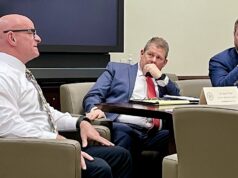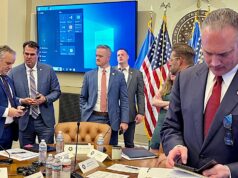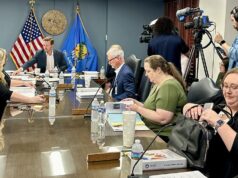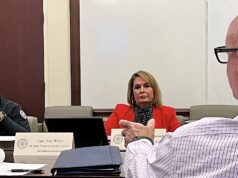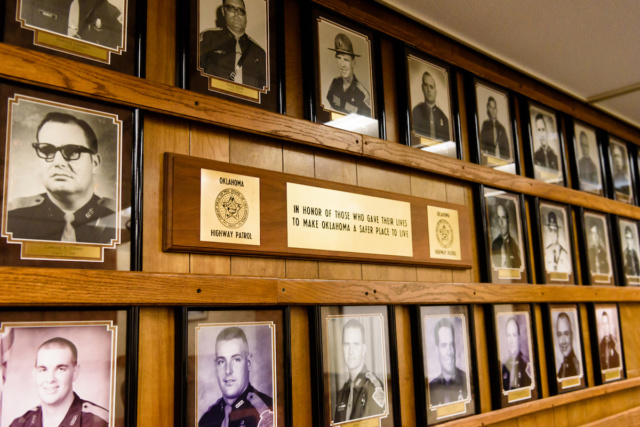

On the eve of Halloween, a shootout capped off a terrifying manhunt for Michael Vance. The confrontation ended with Vance being gunned down by Oklahoma Highway Patrol officer Brian Costanza in Custer County.
The 234-mile drive that took Costanza from his home in Okmulgee to western Oklahoma constitutes an atypical day for OHP troopers. Under an ever-decreasing budget, however, such lengthy pursuits could become a thing of the past.
Troopers currently are limited to a daily 100-mile driving restriction to conserve on gas and vehicle wear. Public Safety Commissioner Michael Thompson said the Department of Public Safety’s budget, which has been shrinking along with the state’s revenue overall, made the limitation necessary. Thompson insists, however, that the driving restriction won’t prohibit troopers from protecting the public.
“If a trooper gets a call for public safety, that trooper is going to that call,” Thompson said. “When the public needs our help, we are certainly going to do our best.”
‘We’re certainly approaching a crisis’
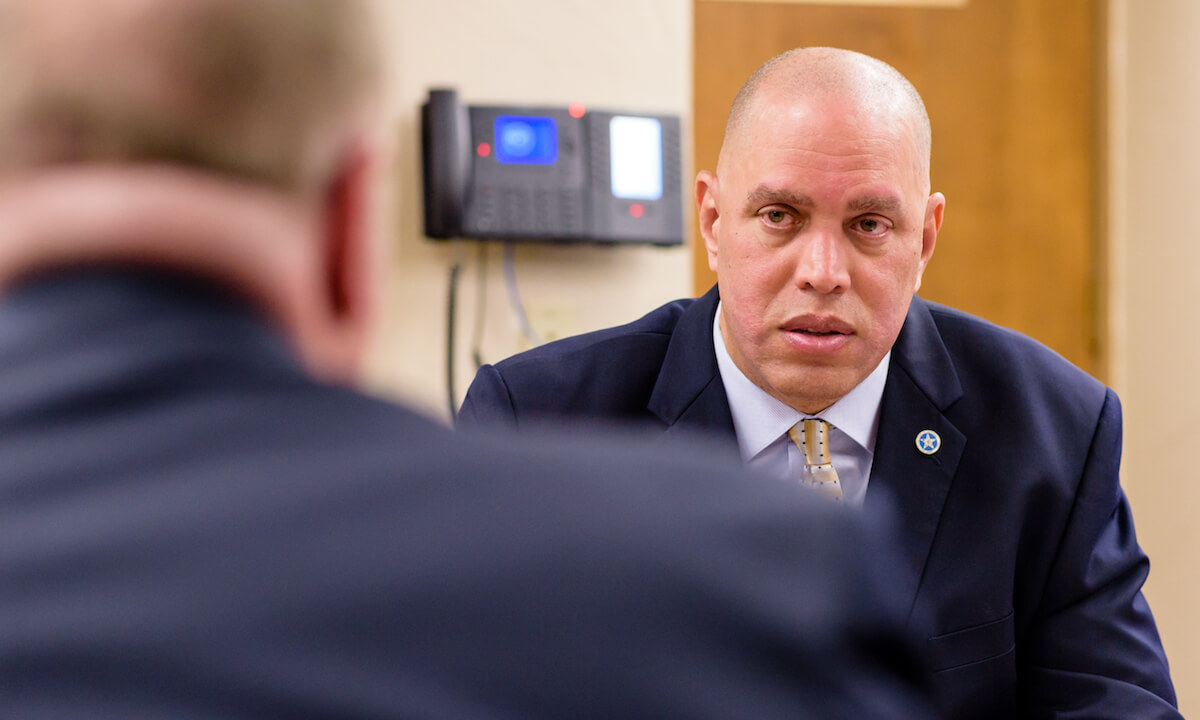
In addition to the 100-mile driving limit, Thompson said the need for a trooper academy marks one of his biggest concerns. He said an academy is needed due to the growing number of highway patrolmen who could potentially retire.
Of the 795 troopers presently employed, about 200 are eligible to retire. With 125 troopers having put in more than 25 years, Thompson said OHP anticipates as many as 30 troopers retiring each year. In 1990, OHP had 825 employees.
The most recent trooper academy was in 2016, when the Oklahoma Turnpike Authority helped provide funding. Thompson said he doesn’t see that as an option this year, nor does he anticipate a trooper academy being in the budget for the upcoming fiscal year. He said if the agency isn’t able to replace the growing numbers of retiring troopers, it could create problems for the state.
“If we let that number get down, I think we’re certainly approaching a crisis,” Thompson said.
Keith Barenberg, president of the Oklahoma Troopers Association, agreed with Thompson that the state budget is on the verge of affecting public safety. He said the numbers alone tell the story, and something needs to be done soon.
“With attrition, we are just losing more and more,” Barenberg said. “Unfortunately, I don’t have a lot of faith that we are going to have (a trooper academy), but it is very critical.”
Thompson said the agency ideally would like to have 60 new troopers each year so they could keep up with the demands of the job and the attrition. He said OHP could at least tread water by having a trooper academy that graduates 30 new troopers annually.
“If we can do that, we can match the amount we are losing,” Thompson said.
For those in the field, decreasing budgets highlight some significant realities: reductions in force and furloughs. Thompson said 32 agency employees were let go last year. He said furloughs are something he has managed to avoid in the past, but they appear more likely as budget projections indicate more potential cuts.
“If we start (furloughs), it’s really going to degrade our services,” Thompson said.
If the agency is asked to make cuts as expected, Barenberg said troopers will be asked to take their share of it. With another budget cut, he said he doesn’t see any way to avoid furloughs.
“Furloughs will be a guarantee,” Barenberg said. “That probably is the only other step to do.”
Morale suffers under adverse conditions
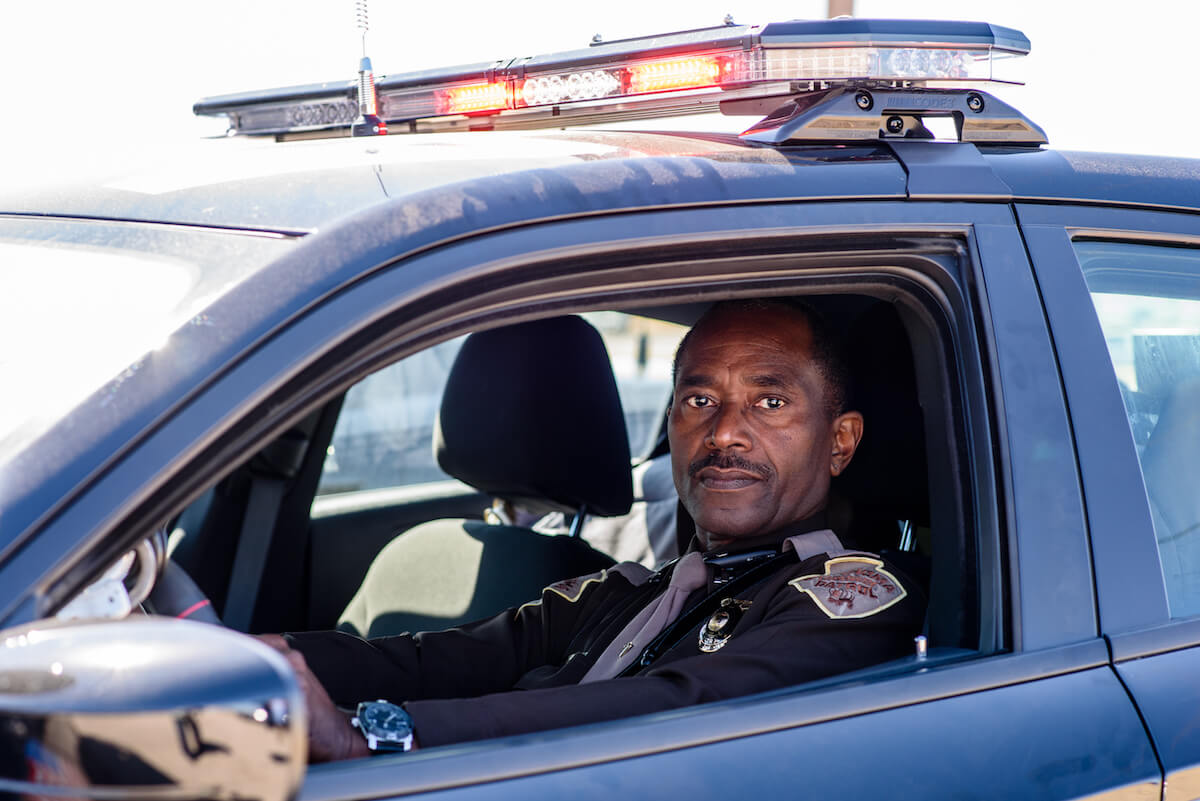
(Trace Thomas)
The reality of a shorthanded OHP means fewer troopers must cover more territory. Troopers must work not only in their home counties but also in neighboring counties as well. Barenberg said this is spreading the troopers thin.
“It’s very difficult to go out and do your job,” he said.
Thompson said these conditions require the troopers to work consistently in a reactive mode rather than proactively controlling situations.
“It’s a common picture,” Thompson said. “When you’re working under those conditions, you’re just doing the radio all day.”
Given the increased demands along with the likelihood of more budget cuts, morale is a concern. Thompson said he could understand if troopers might be experiencing some negative feelings given the strains that come from reduced budgets.
“That could easily happen,” Thompson said. “There are certainly pockets of people who feel that way.”
Governor’s budget proposal
Announced earlier in 2017, the governor’s budget for fiscal year 2018 projects $6.038 billion in available revenue, which is $739.3 million less than what was appropriated last year. The executive budget released in February proposed an increase of $14.6 million for the Department of Public Safety based on a budget proposal that included a number of tax increases. The Oklahoma Legislature, meanwhile, has been reluctant to buy into much of the Gov. Mary Fallin’s budget, and leadership continues to work on putting together a compromise budget for the next fiscal year.
Barenberg said trying to get a feel for what is going to happen with the budget has been more difficult this year. Randy Rogers, legislative liaison for DPS, said he had no answers as to what will happen with the OHP budget.
“We just really don’t know,” he said.











